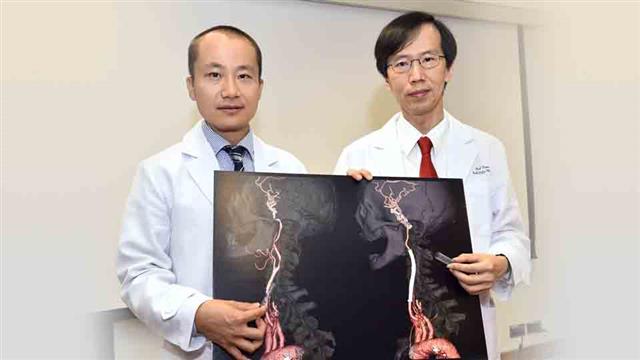A recent study conducted by the Department of Medicine and Therapeutics and Department of Imaging and Interventional Radiology at CUHK reveals that head and neck cancer patients receiving radiotherapy are more likely to develop severe vascular diseases and even occlusions, leading to higher risk of stroke. On the bright side, the CUHK research team shows that Carotid Angioplasty and Stenting (CAS) for patients with radiation-induced carotid stenosis (RIS), carries a success rate of 100% among all the cases studied.
Dr. Thomas Leung, Lee Quo Wei Associate Professor of Neurology, Department of Medicine and Therapeutics said, 'Collateral circulations were often well established in strokes after radiotherapy, suggesting a gross deficiency of blood supply to the brain. Therefore, we concluded that the decompensation of collateralization likely precipitates strokes in patients with RIS.'
From October 2006 to April 2010, the Department of Imaging and Interventional Radiology at CUHK performed Carotid Angioplasty and Stenting (CAS) for 194 patients with carotid stenosis and evaluated them at a four-year follow-up. Among which, 65 are RIS cases and 129 are cases of atherosclerotic stenosis.
Prof. Simon Yu, professor at the Department of Imaging and Interventional Radiology, explained, 'CAS is an image-guided and minimally invasive way of vascular reconstruction, in which the diseased vascular segment is lined with a stent endovascularly and dilated with balloon angioplasty, without a surgical wound at the neck. CAS is found to be an effective treatment for RIS with 100% procedural success rate in 65 studied cases, reducing the annual risk of ipsilateral stroke to 1.2%.' CAS has a similar effectiveness on atherosclerotic stenosis cases.
For details, please click here.


